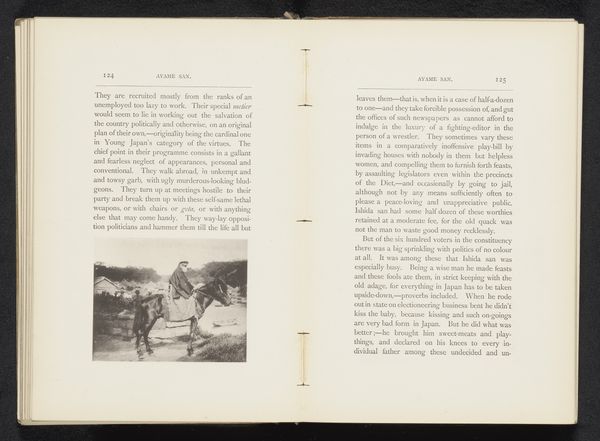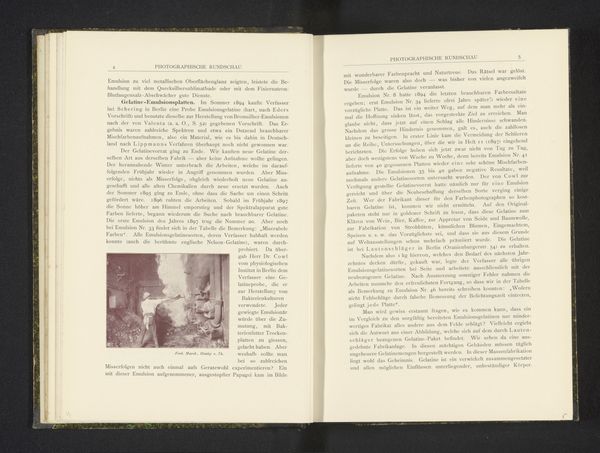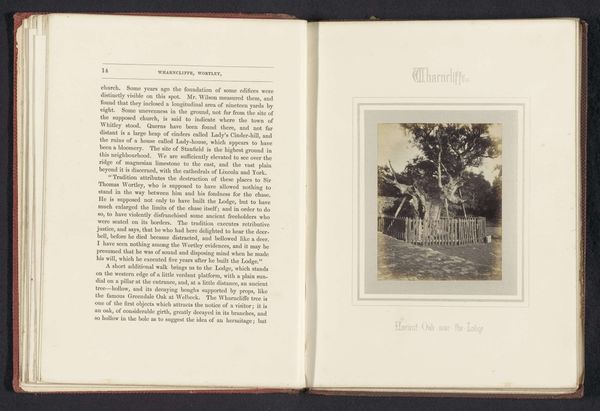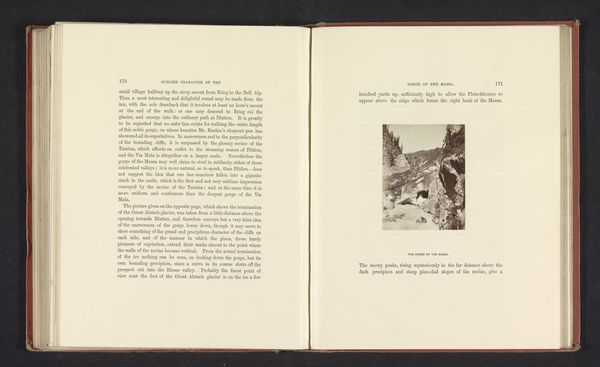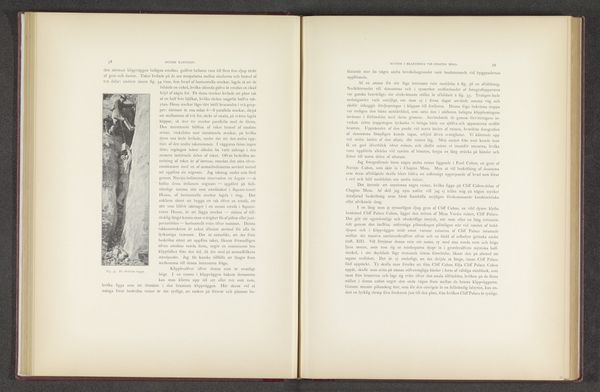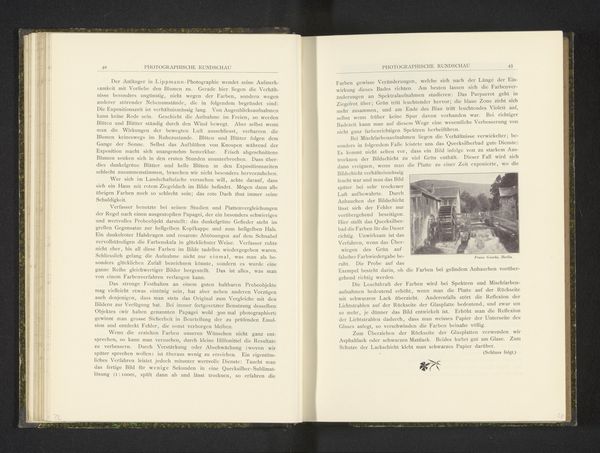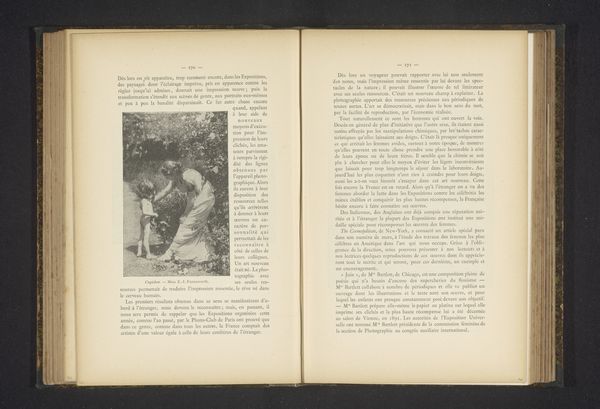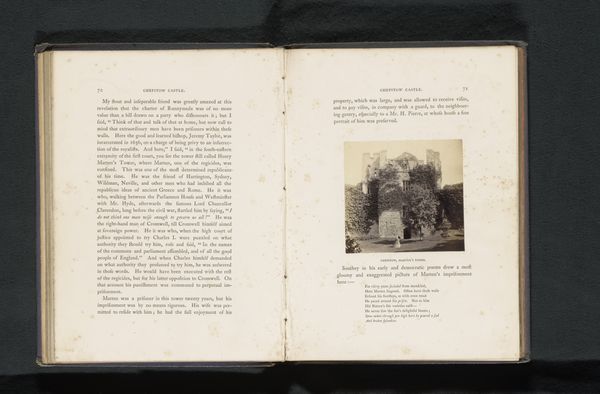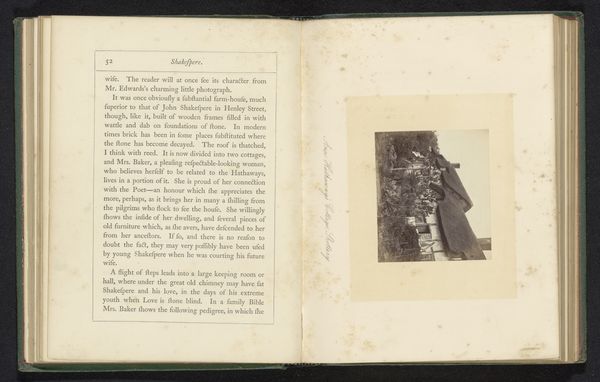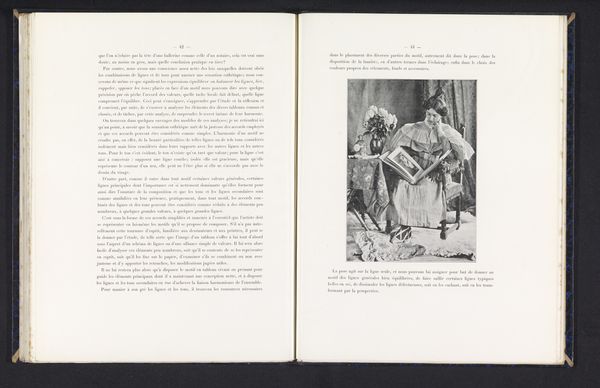
Dimensions: height 72 mm, width 78 mm
Copyright: Rijks Museum: Open Domain
Curator: Looking at this albumen print by Francis Bedford, titled "Gezicht op de ruïne van het grote trappenhuis van Raglan Castle," I’m immediately struck by how delicate yet imposing the structure seems. Editor: I have to agree. The ruins almost seem to be reclaiming the space, and the soft tones lend a romantic air. I can practically feel the dampness of the stone and vegetation. There’s an evident materiality; Bedford masterfully translates textures from stone and ivy. Curator: Precisely. Bedford created this image sometime before 1862, during a surge of interest in medieval subjects, partly spurred by Romanticism. Think of it within a broader cultural context, too, in how society reimagined the medieval era, aligning it with national identities and historical narratives. Editor: That context shapes everything, doesn't it? Examining the print itself, the way the light falls almost theatrically on the decaying stonework, almost makes you ponder the role the materials themselves play. How does decay become part of the visual narrative? How has human engagement altered this structure over centuries? Curator: In photography during this era, especially within institutions and the art market, romanticized and picturesque ruins often served to evoke notions of the sublime. But Bedford goes further by choosing this viewpoint—he also emphasizes the castle’s significance within socio-political and cultural discourses surrounding British history and aristocratic power. Editor: Thinking about consumption patterns also enriches this analysis. Such a print likely functioned as a souvenir for wealthier tourists eager to connect themselves with grand national stories... but it also represents Bedford’s own creative labor within a burgeoning photography market. Curator: True. And through Bedford's skilled application of wet collodion, we can glimpse Victorian society grappling with historical narratives and visual representation. The print now also exists divorced from its Victorian intent, so its life is layered, affected by exhibition design, art markets, and curatorial practices. Editor: It's compelling to consider those interwoven lives of the artwork! A single, seemingly simple landscape holds so much. Curator: Absolutely. And it underscores how artistic creations actively participate in broader socio-cultural dynamics, challenging straightforward aesthetic interpretations. Editor: I agree. Next time, though, maybe something a little less damp! Curator: Don't worry. Next up, something altogether different!
Comments
No comments
Be the first to comment and join the conversation on the ultimate creative platform.

